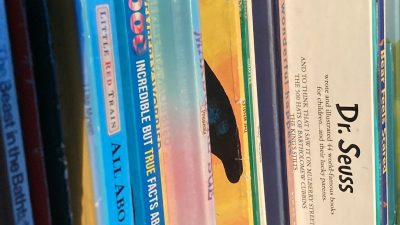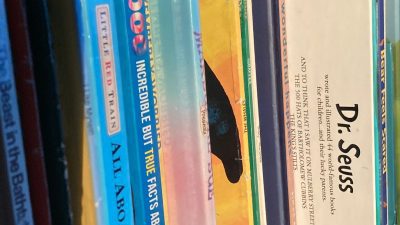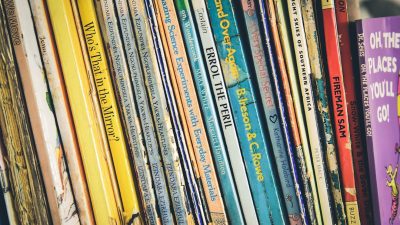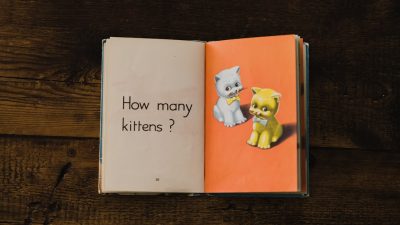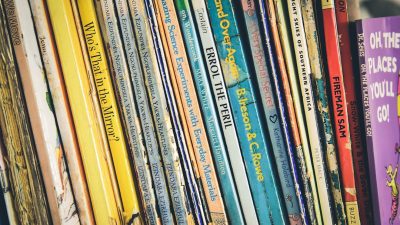Introducing children aged 5 to 7 to the strategic world of chess can be a profoundly rewarding experience. At this developmental stage, young minds are like sponges, eager to absorb new information and challenge themselves. Chess isn’t just a game; it’s a powerful tool for cognitive development, fostering critical thinking, problem-solving skills, patience, and concentration. For parents looking to introduce this timeless game, finding the right resources is key to making the learning process fun and engaging, rather than daunting. This guide will explore a curated selection of the best books designed to teach chess to young children, turning complex rules into accessible and enjoyable lessons. Whether your child is just starting their reading journey and looking for expert books for beginner readers ages 5-7 or ready for more advanced concepts, these books will help them master the board.

20 Recommended Chess Books for Ages 5-7
Chess for Kids by Michael Basman
Michael Basman’s “Chess for Kids” is an outstanding introduction to the game, specifically designed to capture the attention of young learners. The book utilizes a vibrant, colorful layout and engaging characters to explain the fundamental rules and strategies of chess. Basman, an International Master, has a knack for simplifying complex ideas into digestible lessons, making it perfect for children aged 5-7 who are encountering chess for the first time. Each piece is introduced with its unique personality and movement, allowing children to build a strong foundation before moving on to more intricate concepts. Its interactive approach and clear explanations ensure that children remain motivated and excited to learn.
- Highly visual and colorful presentation.
- Introduces each piece with a distinct personality.
- Clear, simplified explanations by an International Master.
- Excellent for absolute beginners aged 5-7.
- Over 1,000 Amazon reviews with a 4.7-star rating.
My First Chess Book by Jessica E. Martin
“My First Chess Book” offers a charming and accessible entry point into the world of chess for young children. Jessica E. Martin uses simple language and bright, appealing illustrations to guide kids through the basics of the game. From understanding the chessboard to learning how each piece moves and captures, the book breaks down information into small, manageable steps. It’s designed to be interactive, encouraging children to set up their own board and practice as they read. This book is ideal for parents and children to read together, fostering a shared learning experience and building confidence in young players.
- Simple language and bright illustrations.
- Breaks down complex rules into easy steps.
- Great for interactive learning with parents.
- Focuses on fundamental concepts for young beginners.
Chess for Children by Murray Chandler
Authored by Grandmaster Murray Chandler, “Chess for Children” is a comprehensive yet engaging guide that teaches kids how to play and improve their chess skills. The book uses a friendly, narrative style, presenting chess concepts through the eyes of two young characters learning the game. It covers everything from the basic movements of pieces to essential opening strategies, tactics, and even simple checkmates. Chandler’s expertise shines through in his ability to make sophisticated ideas understandable for a 5-7 year old audience, laying a solid groundwork for future chess mastery. The inclusion of puzzles and practice exercises helps reinforce learning in a fun way.
- Written by a Grandmaster, ensuring accurate and effective teaching.
- Uses a story-based approach with engaging characters.
- Covers basics to early strategies and tactics.
- Includes puzzles and practice exercises.
- Highly rated for its comprehensive yet kid-friendly approach.
The Kids’ Book of Chess by Harvey Kidder
“The Kids’ Book of Chess” is an excellent resource for young children ready to embark on their chess journey. Harvey Kidder’s approach is highly practical, combining clear instructions with numerous diagrams to illustrate every move and concept. The book starts with the absolute basics, like setting up the board and understanding piece values, and progressively introduces more advanced topics such as special moves, tactical ideas, and simple endgames. Its workbook-style layout encourages hands-on learning, making it easy for children to follow along and apply what they’ve learned on a real chessboard. This makes it a perfect companion for a child who enjoys learning by doing.
- Practical, hands-on learning approach.
- Numerous diagrams for visual learners.
- Covers a wide range of topics from basics to simple endgames.
- Workbook style with exercises.
- Over 500 Amazon reviews with a 4.6-star rating.
A Fun Way to Learn Chess by Jeff Coakley
Jeff Coakley’s “A Fun Way to Learn Chess” lives up to its name, providing an incredibly enjoyable and effective method for children to grasp the complexities of chess. This book is widely used in school chess programs due to its structured and progressive lessons, presented in an approachable, comic-book style format. Each chapter focuses on a specific aspect of the game, introducing new concepts with clear explanations, funny illustrations, and engaging activities. Coakley’s method emphasizes understanding the “why” behind moves, rather than just memorizing them, which helps develop deeper strategic thinking in young players. It is an ideal choice for children who respond well to visual and interactive learning experiences, making learning truly entertaining.
- Widely used in school chess programs.
- Comic-book style format for engaging learning.
- Structured and progressive lessons.
- Emphasizes strategic understanding over memorization.
- Excellent for visual learners.
How to Play Chess for Kids by Jessica E. Martin
Another fantastic contribution from Jessica E. Martin, “How to Play Chess for Kids” offers a slightly more expanded guide than her “My First Chess Book,” while still maintaining its child-friendly appeal. This book is perfect for children aged 5-7 who are ready for a bit more detail after learning the absolute basics, or those who learn quickly. It covers the rules, piece movements, special moves like castling and en passant, and introduces fundamental tactics. The vibrant illustrations and clear, concise text make it easy for kids to follow along independently or with a parent. This book is excellent for solidifying early chess knowledge and preparing children for their first games.
- Detailed yet child-friendly explanations.
- Covers all fundamental rules and special moves.
- Vibrant illustrations aid understanding.
- Suitable for independent or guided learning.
Play Chess Like a Boss by Mike Howard
“Play Chess Like a Boss” by Mike Howard aims to empower young chess players by not only teaching them the rules but also instilling confidence and a strategic mindset. The book uses a modern, engaging design with relatable characters and scenarios to explain chess concepts. It breaks down the game into easily understandable segments, focusing on one piece at a time before combining their interactions. Beyond just piece movement, it introduces basic opening principles, simple tactics, and the importance of planning. This book is particularly good for kids who enjoy a slightly more playful and empowering approach to learning, encouraging them to think critically and “boss” the chessboard.
- Modern and engaging design.
- Focuses on building confidence and strategic mindset.
- Explains concepts through relatable scenarios.
- Introduces basic opening principles and tactics.
Chess is Child’s Play by Laura Sherman
Laura Sherman’s “Chess is Child’s Play” offers a unique and highly effective method for teaching young children chess, particularly those who might be overwhelmed by traditional rulebooks. This book centers around a story-based approach, introducing the chess pieces as characters in a kingdom, each with their own special abilities and roles. By engaging children’s imagination, the book makes learning the movements and values of each piece intuitive and memorable. It then gently transitions into basic strategy and game play, ensuring that children grasp the fundamentals in a playful and enjoyable manner. This narrative method is incredibly powerful for holding the attention of 5-7 year olds and fostering a genuine love for the game.
- Unique story-based learning approach.
- Introduces pieces as engaging characters.
- Makes rules intuitive and memorable.
- Excellent for imaginative learners.
The Book of Chess for Children by Franco Cosimo Panini
“The Book of Chess for Children” by Franco Cosimo Panini is a beautifully illustrated and comprehensive guide that makes learning chess an artistic and intellectual adventure. This visually stunning book presents the game in a clear and captivating way, with large, colorful diagrams and detailed explanations for each stage of learning. It covers the history of chess, the rules of movement for each piece, basic tactics, and introductory strategies. The high-quality production and engaging presentation make it a wonderful gift and a valuable addition to any young learner’s library. It’s especially suited for children who appreciate aesthetically pleasing books and clear visual instructions.
- Beautifully illustrated and high-quality production.
- Comprehensive guide covering history, rules, and basic tactics.
- Large, colorful diagrams for visual learning.
- Appealing to children who enjoy art and history.
Start Chess for Kids by David MacEnulty
David MacEnulty, a renowned chess coach featured in the documentary “Brooklyn Castle,” brings his wealth of experience to “Start Chess for Kids.” This book provides a structured and encouraging approach to learning chess, breaking down the game into simple, actionable lessons. MacEnulty emphasizes understanding the purpose behind each move and developing a strategic mindset from an early age. The book includes clear explanations, diagrams, and practice exercises that are carefully designed to build confidence and skills progressively. His teaching philosophy, focused on patience and clear communication, shines through, making it an excellent resource for parents and educators alike. This book will help kids gain confidence and develop early strategic thinking.
- Authored by a renowned chess coach.
- Structured and progressive lessons.
- Emphasizes strategic understanding and purpose of moves.
- Includes clear diagrams and practice exercises.
- Builds confidence and foundational skills.
The Everything Kids’ Chess Book by Richard Hall
“The Everything Kids’ Chess Book” by Richard Hall is a comprehensive and playful guide that makes chess accessible and fun for children. This book uses a lighthearted tone and engaging activities to teach kids everything they need to know to start playing. It covers the basics of how each piece moves, special rules, and introduces simple strategies for attacking and defending. The book is packed with puzzles, quizzes, and games that reinforce learning and keep children entertained. It’s an all-in-one resource that can take a child from knowing nothing about chess to being able to play their first full game with understanding and enjoyment. This is a great choice for parents who want a complete yet fun curriculum.
- Comprehensive and playful approach.
- Includes puzzles, quizzes, and games.
- Covers basics to simple strategies.
- Engaging and humorous tone.
- Over 1,000 Amazon reviews with a 4.6-star rating.
Learn Chess by Susan Polgar and Paul Truong
“Learn Chess” by Grandmaster Susan Polgar and Paul Truong is a powerhouse resource, offering a structured and effective learning path from two of the most respected names in chess education. While some of Polgar’s work can be advanced, this particular book is tailored for beginners, simplifying complex ideas into an easy-to-follow format. It focuses on clarity and repetition, ensuring that young learners firmly grasp each concept before moving on. The book includes numerous exercises and examples to practice newly acquired skills, making it an excellent choice for kids aged 5-7 who are serious about learning the game and want to build a strong foundation. This book is also excellent for older children learning to read, similar to great books for children learning to read ages 5-7.
- Authored by Grandmaster Susan Polgar, a top chess educator.
- Structured, clear, and effective learning path.
- Includes numerous exercises and examples.
- Excellent for building a strong foundational understanding.
The Chess Kid’s Book of Chess by John Harris
“The Chess Kid’s Book of Chess” by John Harris is specifically crafted to appeal to young children, using vibrant illustrations and a straightforward approach. The book focuses on making the initial steps of learning chess as un intimidating as possible. It starts with the very basics: how to set up the board, the names of the pieces, and their individual movements. Harris introduces simple tactical ideas and opening principles in a way that is easy for 5-7 year olds to understand and remember. The emphasis is on building confidence and making the learning process enjoyable, ensuring that children develop a positive association with the game from the outset. This book is a wonderful first guide for any budding chess player.
- Vibrant illustrations and straightforward approach.
- Focuses on making learning unintimidating.
- Introduces basics and simple tactical ideas.
- Aims to build confidence and positive association with chess.
Winning Chess Strategies for Kids by Jeff Coakley
Following his successful “A Fun Way to Learn Chess,” Jeff Coakley’s “Winning Chess Strategies for Kids” is designed for children who have grasped the basics and are ready to delve into more strategic thinking. While it builds on foundational knowledge, many concepts are introduced gently enough for advanced 6 or 7-year-olds with good concentration. The book introduces key strategic principles such as pawn structures, open lines, and piece activity, all explained with Coakley’s signature comic-book style and engaging puzzles. It helps children transition from merely moving pieces to understanding the bigger picture of the game. This is an excellent next step for children who are already familiar with how the pieces move and want to start winning more games.
- Builds on basic knowledge for strategic thinking.
- Introduces key strategic principles in an accessible way.
- Maintains Coakley’s engaging comic-book style.
- Ideal for children ready for more advanced concepts.
Chess Tactics for Kids by Murray Chandler
Grandmaster Murray Chandler’s “Chess Tactics for Kids” is a superb resource for young players ready to develop their tactical awareness. For confident 6 and 7-year-olds who know the rules, understanding tactics is crucial for improving their game. This book introduces essential tactical motifs like forks, pins, skewers, and discovered attacks through clear explanations and a wealth of engaging puzzles. Chandler’s ability to simplify complex tactical ideas into understandable patterns makes this book highly effective. It encourages children to actively solve problems and recognize tactical opportunities on the board, greatly enhancing their playing strength. This book is an invaluable tool for taking a child’s game to the next level.
- Authored by Grandmaster Murray Chandler.
- Introduces essential tactical motifs (forks, pins, etc.).
- Filled with engaging puzzles for practice.
- Enhances tactical awareness and problem-solving.
- Highly rated for improving children’s game.
Learn Chess with John and Mary by David Leal
“Learn Chess with John and Mary” by David Leal offers a delightful and interactive journey into the world of chess, presented through the adventures of two young learners. This book takes a step-by-step approach, ensuring that children aged 5-7 can easily follow along and grasp each new concept. It covers piece movements, basic strategies, and simple checkmate patterns, all explained through clear diagrams and engaging storytelling. The narrative structure makes learning feel less like a chore and more like an exciting exploration. This book is particularly well-suited for children who enjoy learning through stories and visual aids, fostering a genuine interest in the game.
- Interactive, story-based learning.
- Step-by-step approach for young children.
- Covers piece movements, basic strategies, and checkmate patterns.
- Clear diagrams and engaging storytelling.
Who Was Queen? by Andrew N. Gordon
“Who Was Queen?” by Andrew N. Gordon is a wonderfully imaginative storybook that cleverly introduces children to the power and importance of the queen piece in chess. This book stands out by using a narrative to teach, making it highly engaging for young children aged 5-7 who might prefer stories over traditional instructional texts. While not a complete “how-to-play” guide, it builds excitement and understanding around one of the most crucial pieces on the board. The vivid illustrations and captivating storyline help children visualize the queen’s movement and strategic value, sparking their interest in learning the full game. It’s a great complementary book to a basic chess guide or best books for 1st grade (ages 5-7) that introduce strategic thinking.
- Imaginative story-based approach.
- Focuses on the queen piece and its strategic value.
- Engaging for children who love stories.
- Builds excitement and curiosity about chess.
The Knight’s Tour by Cindy Neuschwander
“The Knight’s Tour” by Cindy Neuschwander is a creative and mathematically inspired picture book that playfully introduces children to the unique movement of the knight. While not a full chess instruction manual, this book is an excellent way to familiarize 5-7 year olds with one of the trickiest pieces to master. Through a charming story, children follow a knight on its quest, learning its “L-shaped” moves in a memorable and visual way. It’s fantastic for developing spatial reasoning and problem-solving skills, even before a child sits down for a full game. This book can spark curiosity and provide a fun, non-intimidating entry into a specific aspect of chess, making it an ideal choice for the best books for 6-year-olds (ages 5-7).
- Creative, mathematically inspired picture book.
- Focuses specifically on the knight’s movement.
- Enhances spatial reasoning and problem-solving skills.
- Engaging story for young learners.
My First Book of Checkmate by Jeremy Silman
Jeremy Silman’s “My First Book of Checkmate” is an excellent resource for young children who have grasped the basic movements of the chess pieces and are ready to understand the ultimate goal of the game: checkmate. For a child aged 5-7, understanding checkmate can be a significant leap, and Silman breaks it down into simple, manageable patterns. The book uses clear diagrams and straightforward explanations to show various checkmate scenarios, making it easier for kids to recognize and execute winning moves. It’s an empowering book that helps children transition from just moving pieces to playing with a clear objective. This book is vital for building confidence and a deeper understanding of chess strategy.
- Focuses specifically on understanding and achieving checkmate.
- Breaks down checkmate patterns into simple lessons.
- Clear diagrams and straightforward explanations.
- Empowering for young players to learn winning moves.
The Chess Story by S.J.V. Bryant
“The Chess Story” by S.J.V. Bryant is a beautifully illustrated narrative that introduces the game of chess through an engaging fable. This book is particularly well-suited for younger children aged 5-7 who respond well to storytelling as a learning method. It personifies each chess piece, giving them distinct personalities and roles within the story of the chessboard kingdom. As the story unfolds, children naturally learn the movements, values, and basic interactions of the pieces without feeling like they are “studying” rules. This imaginative approach makes the foundational concepts of chess memorable and enjoyable, sparking a lifelong interest in the game. It is a creative way to introduce children to the world of chess.
- Beautifully illustrated narrative.
- Introduces chess through an engaging fable.
- Personifies each chess piece for memorable learning.
- Ideal for children who enjoy stories and imaginative play, and often recommended as one of the award-winning 1st and 2nd grade books ages 5-7.
Encouraging a Lifelong Love for Reading
Introducing your child to chess through these fantastic books offers more than just learning a game; it opens doors to enhanced cognitive abilities, strategic thinking, and patience. The journey of learning chess is akin to embarking on a great adventure, and with the right books, it can be a joyful and enriching experience for children aged 5-7. Remember, consistency is key, so try to incorporate short chess lessons or story times into your weekly routine. Encourage them to play with you, with friends, or even online against kid-friendly opponents. The ultimate goal is to foster a genuine love for the game and the invaluable skills it teaches, building a strong foundation that will benefit them in countless ways throughout their lives. Happy checkmating!


